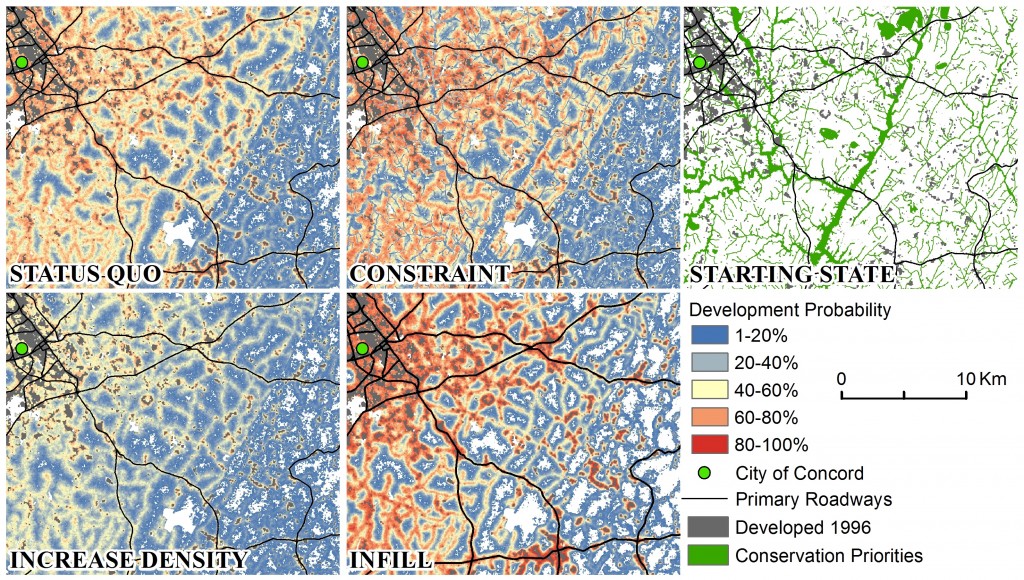New Urban Growth Simulations Reveal Trade-Offs Between Alternative Conservation Planning Approaches

Land that is of great value for conservation can also be highly suitable for human use, resulting in competition between urban development and the protection of natural resources. New research by Center investigators demonstrates how simulating urbanization scenarios using FUTURES land change model reveals critical trade-offs between alternative conservation planning approaches.
Postdoctoral scholar Monica Dorning and co-investigators, including Jennifer Koch (now at Univ. of Oklahoma), Douglas Shoemaker (PhD Student), and Ross Meentemeyer (Director) had their findings recently published in the journal Landscape and Urban Planning. The full reference, abstract, and link to online article is below.
Dorning, M A, J Koch, D A Shoemaker, and R K Meentemeyer. (2015). Simulating urbanization scenarios reveals trade-offs between conservation planning strategies. Landscape and Urban Planning 136: 28-39.
Abstract:
Land that is of great value for conservation can also be highly suitable for human use, resulting in competition between urban development and the protection of natural resources. To assess the effectiveness of proposed regional land conservation strategies in the context of rapid urbanization, we measured the impacts of simulated development patterns on two distinct conservation goals: protecting priority natural resources and limiting landscape fragmentation. Using a stochastic, patch-based land change model (FUTURES) we projected urbanization in the North Carolina Piedmont according to status quo trends and several conservation-planning strategies, including constraints on the spatial distribution of development, encouraging infill, and increasing development density. This approach allows simulation of population-driven land consumption without excluding the possibility of development, even in areas of high conservation value. We found that if current trends continue, new development will consume 11% of priority resource lands, 21% of forested land, and 14% of farmlands regionally by 2032. We also found that no single conservation strategy was optimal for achieving both conservation goals. For example, strategies that excluded development from priority areas caused increased fragmentation of forests and farmlands, while infill strategies increased loss of priority resources proximal to urban areas. Exploration of these land change scenarios not only confirmed that a failure to act is likely to result in irreconcilable losses to a conservation network, but that all conservation plans are not equivalent in effect, highlighting the importance of analyzing trade-offs between alternative conservation planning approaches.
Landscape and Urban Planning is an international journal aimed at advancing conceptual, scientific, and applied understandings of landscape in order to promote sustainable solutions for landscape change…
More info: http://www.journals.elsevier.com/landscape-and-urban-planning/
- Categories:


